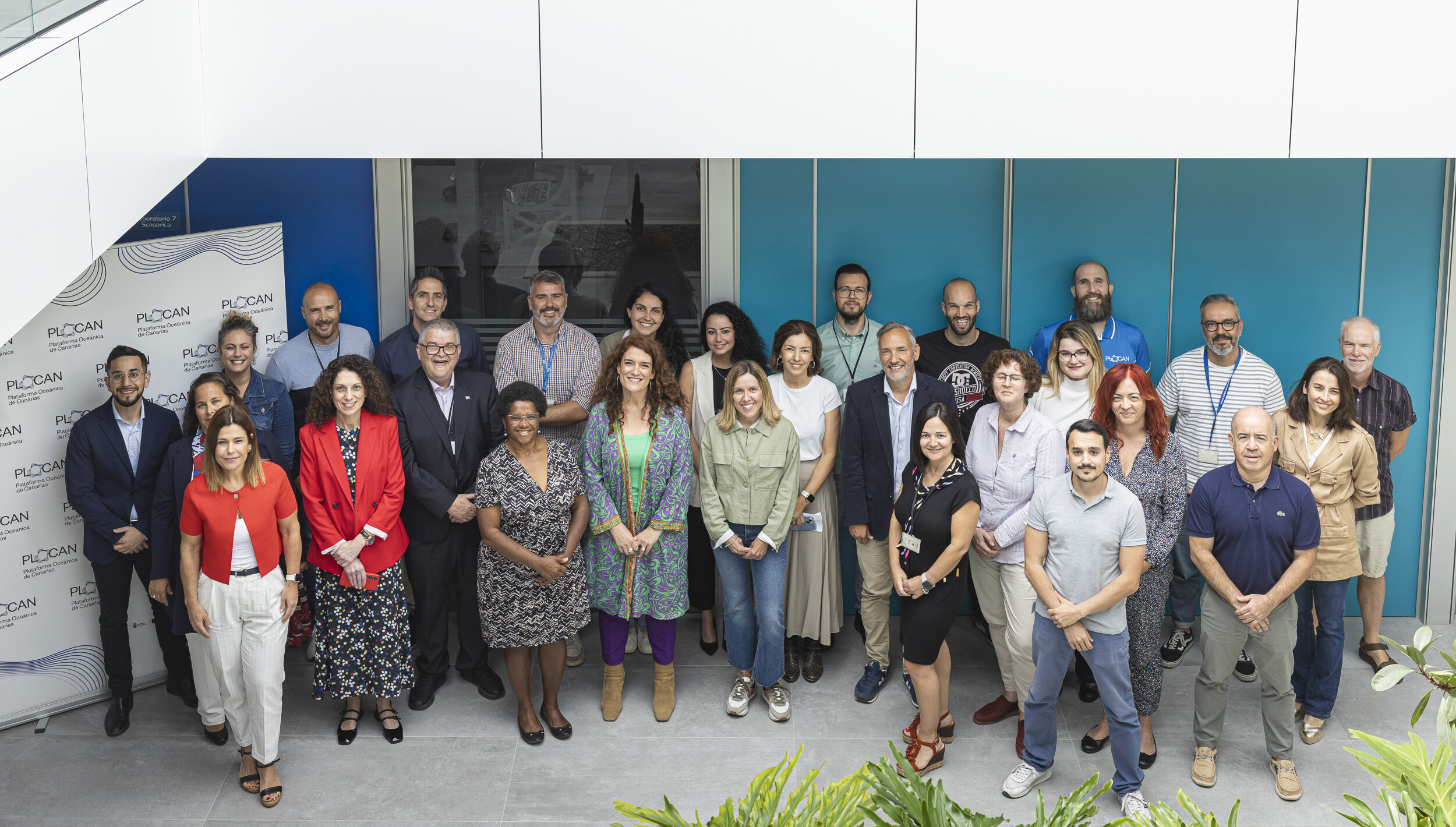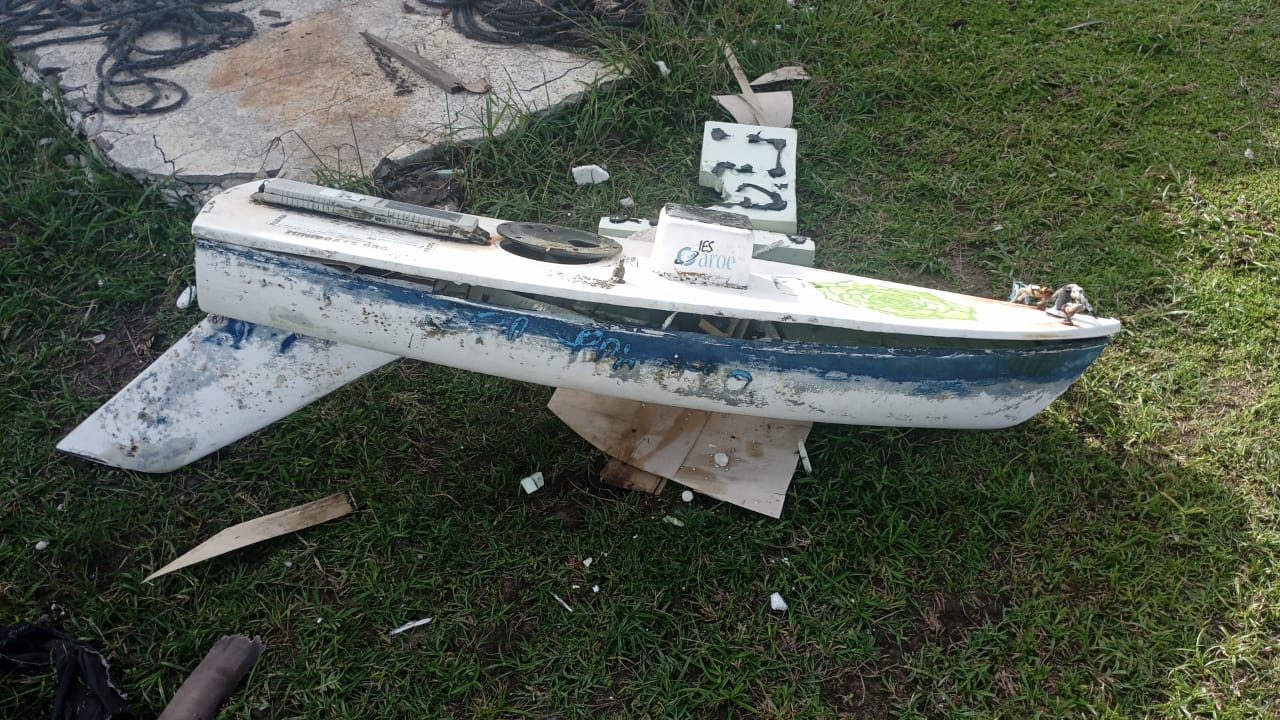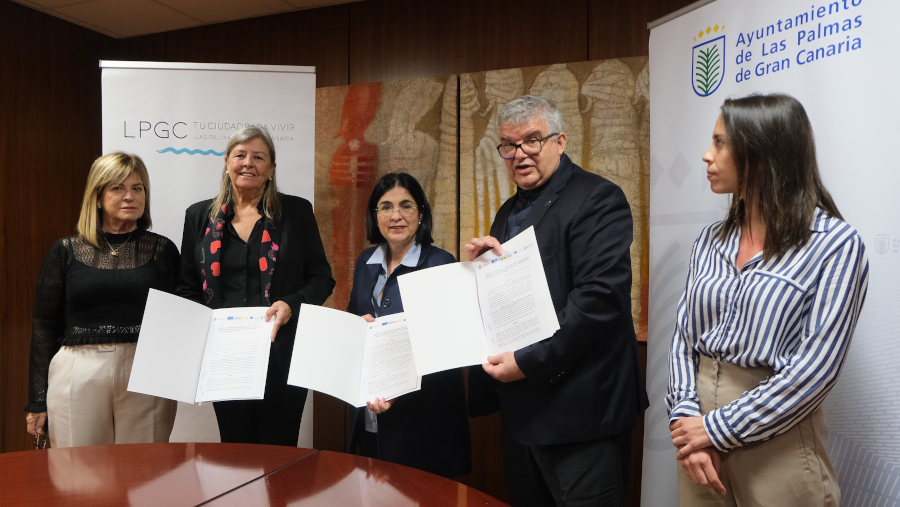The PLOCAN consortium, aiming to adequately increase its operational capabilities and scientific-technical services in order to cover the requirements from its current users, has procured a new VIMAS VIMAS unit (Vehicles, Instruments and Underwater Machines) within the framework of the BLUE UPGRADE project (ICTS 2021 Call – Recovery and Resilience Plan; Ministry of Science and Innovation) through the public tender L-CSU-PA-1-2022.
This new acquisition, which comes to join the fleet of autonomous marine vehicles that PLOCAN manages and operates, refers to an Uncrewed Surface Vehicle (USV) from AutoNaut AutoNaut technology that integrates a patented propulsion system based on wave energy, and which has been initially configured with a set of sensors to monitoring atmospheric and oceanographic environmental variables in both coastal and oceanic areas through missions and operations of different spatio-temporal scope. Specifically, the USV-AutoNaut plans to cover operational needs of MARCET, MAMPALMA, TECHOCEANS, PUREWIND and THINKINAZUL projects, among others, in the coming months.
BLUE UPGRADE represents a strategic project for the PLOCAN infrastructure, which allows the consortium to continue positioning itself as an international benchmark for the marine ICTS sector. To this end, BLUE UPGRADE includes four lines of action: ADS (Equipment and safety adaptation of the platform operations), LIDOM (Meteorological observation based on LIDAR technology), TROBSCAB (Development, laying and operation of cabled observatory sections) and DAVIMAS (Development and update of the base for vehicles, instruments and machines) on the facilities of the offshore multipurpose platform and the oceanic observatory. BLUE UPGRADE allows PLOCAN to adapt its offer of services to current and future demands by the innovative ecosystem of the Blue Economy, positioning the infrastructure as an international benchmark in its main areas of activity: the demonstration of innovative multidisciplinary marine technology and the ocean observation.



